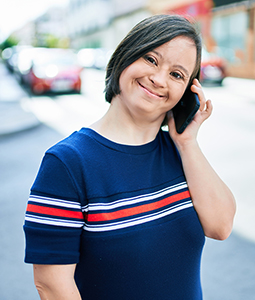 Defining assertiveness
Defining assertiveness
When we advocate for our needs and the needs of others, we need to be assertive.
 Being
assertive means you are willing to state your opinion, even if others haven’t done so or if your opinion is different. It means that you “own” your opinion; that you express and take responsibility for your point of view.1
|
Assertiveness is key for our advocacy to be healthy, respectful and effective. When we’re trying to influence a decision-maker, we need to be able to present our point of view and take ownership of what we’re saying.
Assertive, aggressive, passive
Sometimes, being assertive can get mixed up with being aggressive. So, what’s the difference?
Passive ---- Assertive ---- Aggressive
(too little) (just right) (too much)
When you’re
assertive, you can express your own rights without taking away others’ rights. You are direct, open, honest and respectful.

On the other hand, if you’re
aggressive, you are likely expressing yourself without thinking about others’ rights, perspectives and needs.
Feeling angry and aggressive is certainly a natural reaction to feeling wronged. Maybe the other person has acted aggressively toward you. By choosing to respond with assertiveness instead of aggression, you are much more likely to come to an acceptable outcome. When you stand up for your own needs without ignoring the other person’s, they are more likely to hear what you are saying and not shut down.
What if you’re not being assertive or aggressive? That might mean you’re being passive. When you are passive, you don’t speak up when you feel wronged. You may be apologetic or hesitant when you speak.

It’s ok if you naturally feel more
passive. Sometimes being passive can be a good thing, because it can help you be open and understanding. At the same time, it’s important that you’re not so passive that it gets in the way of standing up for your rights and needs.
Her are some examples of aggressive, passive and assertive communication:
-
Scenario 1: Someone is parked in an accessible parking spot without a permit.
-
Aggressive: What are you thinking? You can’t park here – it’s an accessible spot! Get out of the way.
-
Passive: This is an accessible parking spot, but I guess you can park here, since you were here first.
-
Assertive: Excuse me, but this is an accessible parking spot. I have a permit to park here. Can you please find another spot if you don’t have a permit?
-
Scenario 2: You need to leave work early for a medical appointment.
-
Aggressive: I’m leaving early on Thursday because I have a medical appointment. You better let me go because it’s important. I don’t want to hear anything about it.
-
Passive: I have a medical appointment on Thursday. I know it’s during work hours so it’s no problem if I can’t make it. I’ll just figure it out.
-
Assertive: I will need to leave a bit early on Thursday because I have an important medical appointment that can’t be rescheduled. How can I make up the time?
-
Scenario 3: You feel your parents are not giving you the amount of independence you want.
-
Aggressive: I want you to back off so I can live my own life! Please just leave me alone.
-
Passive: Sometimes it bothers me that you don’t let me make my own choices, but that’s ok, I guess that’s just how it is.
-
Assertive: I want to feel more independent on a day-to-day basis and make more choices for myself. Can we talk about how we could work toward that?
